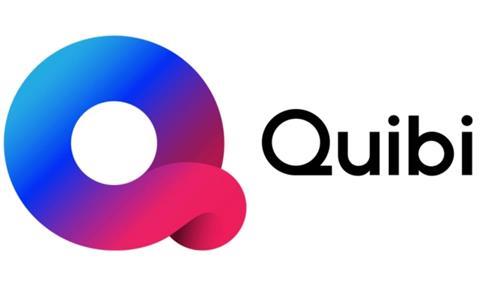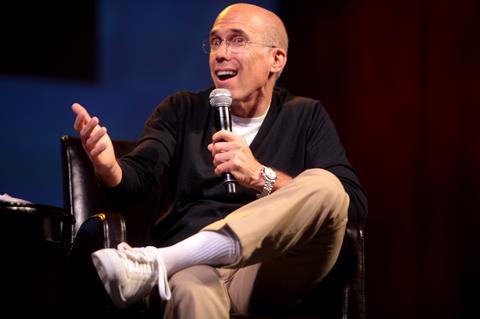A-list talent has flocked to Quibi, lured by its top management team, big budgets and attractive rights offer. But can the premium short-from platform translate pre-launch buzz into paid subscribers? Tim Dams reports, in the latest in IBC365’s series on the new SVOD platforms.
Of all the major SVOD launches, the premium short-form platform Quibi is arguably the most radical – and difficult to call.

Billed as a combination of Silicon Valley and Hollywood expertise, Quibi was set up by former DreamWorks founder Jeffrey Katzenberg and ex-eBay and HP Enterprise chief executive Meg Whitman. Due to launch in April 2020, it is backed by a $1bn programming budget.
Quibi’s content will consist of scripted and unscripted series, broken down into short chapters (or Quibis, short for quick bites) of around 7-10 minutes each, and made specifically for mobile viewing. A new chapter will be released each weekday.
“You have to be absolutely brutal in the edit – a lot of what we shot, including entire scenes, have hit the cutting room floor.” Rick Murray, Workerbee
The well-funded start-up, which launches initially in North America, has backers including Disney, NBCUniversal, WarnerMedia, Lionsgate, ITV, Liberty Global, Entertainment One and China’s Alibaba.
It’s offering subscriptions with two tiers of pricing: $4.99 with short ads, and $7.99 without them. In its first year, Quibi aims to deliver 7,000 pieces of content.
Read more Apple bites into the streaming market
The company says it has already booked $150 million in upfront ad deals from advertisers including Google, Procter & Gamble, Walmart and PepsiCo.
Quibi’s target audience is people aged 25 to 35, and its larger demographic could include people ages 18 to 44.
In its favour, Quibi has entered the market with a gusto that is unlike anything seen in the short form space before.
Top talent
It’s been on a huge commissioning spree, unveiling projects from A-listers including Guillermo del Toro, Doug Liman, Jennifer Lopez, Sam Raimi, the Russo brothers, Antoine Fuqua, Steven Spielberg, Idris Elba and Trevor Noah.
Steven Spielberg, for example, is making After Dark, a horror series that users will be able to watch only between sundown and sunrise local time.
In recent weeks, Steven Soderbergh has signed on to executive produce survival drama Wireless, while Andy Samberg is set to host and executive produce tiny food competition series Biggest Little Cook-Off.
UK production company Workerbee is one company with a coveted Quibi commission. It has produced Elba vs Block, an eight-episode car stunt series starring Idris Elba and renowned rally driver Ken Block for Quibi. Each episode comes in at under seven minutes. It’s one of the first series to deliver to Quibi.

“You can’t take your time with the storytelling,” explains Workerbee managing director and executive producer Rick Murray. “You have to be absolutely brutal in the edit – a lot of what we shot, including entire scenes, have hit the cutting room floor.”
Elba vs Block pits the two drivers against each other in a series of stunts with names like Wall of Death, Car Tightrope and Flaming Obstacle Course, while playing tricks on each other along the way.
“You have got to very little time to set up the motivation for the joke, or how it is going to play out. You have to make everything very visual, so viewers get it immediately.”
There’s no voiceover either, just captions to help move the show along. Because Quibi’s content is made to be watched on a mobile phone, “the text has to be huge”, adds Murray.
“The Quibi guys told us that their research said that six minutes 40 seconds is the average time that 15-25 year olds now spend watching content on their mobiles. So six minutes 40 seconds is what we were aiming at.”
The result, reckons Murray, is a “very refreshing form that absolutely rattles through – I’ve actually become very fond of it.”
Small screen production
Not only are Quibi programmes different from longer-form TV content in terms of storytelling, but they are visually distinct too.
Big wide shots of a car driving in the distance don’t work so well on a mobile, so footage has to be tight and up close for the small screen.
Content also has to be filmed so it can be watched either vertically or horizontally on the phone.
“You’d think there would be a really high tech solution for this, but we used camera tape on the monitors to tape out a vertical frame, so that we could be sure we were framing for both horizontal and vertical,” says Murray.
Because the content is filmed in 4K, the resolution is high enough for an image to be cropped to the right dimension in the edit without suffering any loss of quality.
“As the long form SVOD market becomes even more crowded, Quibi’s very different offering could make sense.”
Within the industry, Quibi has also attracted a lot of interest – far more than any of its short form predecessors.
The budgets on offer help too: it is estimated that Quibi is paying the equivalent of $3m an hour for some projects, similar to a Netflix budget.
The rights model is also attractive to producers. As part of its deals, Quibi pays the cost of a show, plus a generous production fee. For this, Quibi exclusively licenses the content in bite-size viewing form for seven years, after which the rights revert back to the creators and producers.
But, crucially, after two years on the service, the creators will be able to edit the short form version into one feature length project, and can sell the rights to international buyers.
This innovative IP ownership model stands in stark contrast to a streamer like Netflix which likes to take all global rights for long periods of time when it commissions.
As the business matures and if it is a success, the deal terms and budgets may of course change. But for now, Quibi’s generous budgets and rights model have helped it attract top talent, producers and ideas, and in a very short space of time.
“They have judged it absolutely right,” says Murray. “There is a real buzz about it.”
Popular pitches

So much so, it seems, that producers are inundating the platform with pitches. The way to win a commission, he says, is to think about where Quibi is in terms of its life cycle – as a new platform that will be unfamiliar to most potential subscribers.
“They need content that people feel at home with – so faces that people know. Or content that is going to hit you round the face.”
In many ways, it is counter intuitive for Quibi to be launching a short form service in an era when platforms such as Netflix have made a business out of audiences’ increasing willingness to binge-watch long, expensive series.
But, just as the long form SVOD market becomes even more crowded, Quibi’s very different offering could make sense.
Quibi is telling its producers that they should imagine viewers watching their content sitting on the bus or viewing in a lunchbreak while eating a sandwich in one hand and holding a phone in the other.
It’s an image that rings true for many busy, time-starved people, an increasing number of whom say they struggle to fit in all the many talked about drama series that are now available on streaming platforms.
“Quibi is coming out with a very specific product that is aimed at a specific demographic who watch content in a certain way,” says Murray, who points out that the industry hasn’t seen something like this since the advent of YouTube or streaming. “It’s so refreshing to have someone trying something new.”
On the flip side, the challenge that faces Quibi is daunting. There is very little historic evidence that a younger demographic is willing to pay for short form video. Nobody has yet successfully managed to crack the paid-for short form market; two attempts to do so - Vivendi’s StudioPlus and Verizon’s go90 – closed down last year, nursing heavy losses.
Quibi has also seen a string of executive departures in recent weeks, including head of content operations Diane Nelson. Other executives who’ve left include Janice Min, head of daily content, in September; and Tim Connolly, the former Hulu executive who was head of partnerships and distribution, in August.
Quibi is taking a big risk launching in the middle of the streaming wars, leaving analysts wondering just how many services financially squeezed consumers are prepared to pay for. Also, will viewers really appreciate the production quality on such a tiny screen?
Read more Disney bets big on the streaming revolution
That said, Quibi does not see itself as a direct competitor to long-form streamers like Netflix, Amazon Prime and Hulu or newcomers like Apple TV+, Disney+ and the forthcoming Peacock and HBO Max, or indeed to traditional TV.
Instead, Quibi sees its primary competition as YouTube, and mobile-first services like Facebook, Instagram and Snapchat – but they are mostly free of cost.
As such the risks for Quibi are of a very different order to the longer form SVOD platforms.
But, in its favour, it is a very different proposition with a unique and well-funded offer that could shake up the market as Netflix did when it first launched.
It also has a highly experienced, and capable management team – backed by investors who know the industry well. If anyone can crack the premium short form market, it is likely to be them.
2020: The year of the OTT
- 1
- 2
- 3
 Currently reading
Currently readingQuibi: Assessing the appetite for snackable streaming
- 4
- 5
- 6



















![Adeline Platform Help[64]](https://d3dh6of9cnaq4t.cloudfront.net/Pictures/100x67/0/6/9/30069_adelineplatformhelp64_996092_crop.png)









No comments yet